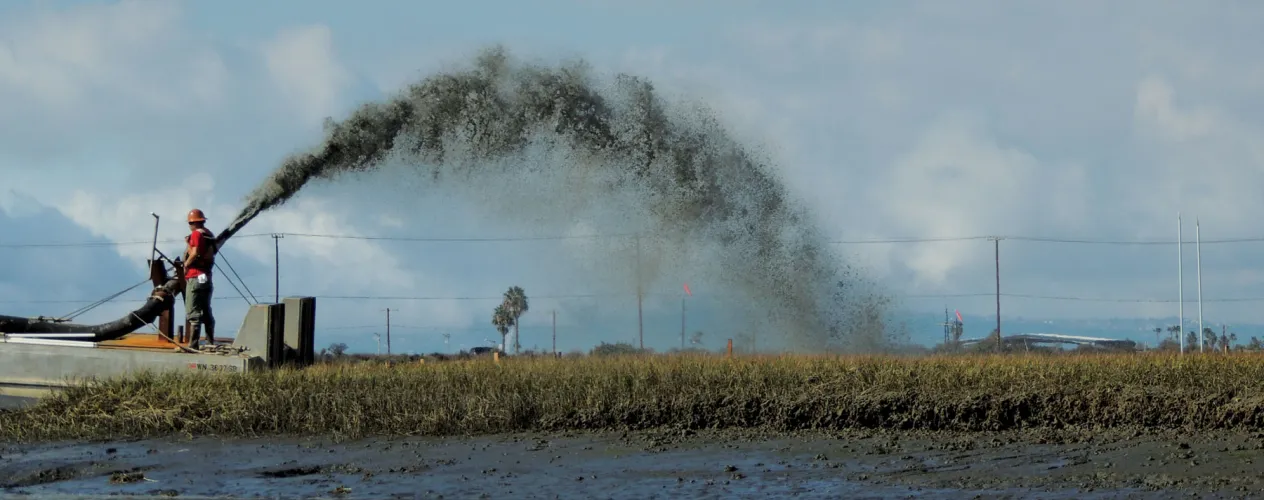Rising Tides Ahead
Higher sea levels pose a long-term threat to coastal wetlands and the populations of their adjacent communities. FSPH’s Richard Ambrose is studying potential responses.

BEYOND THEIR NATURAL BEAUTY, the wetlands along the Pacific and other coastal regions serve valuable purposes for animals and humans alike. Ecologically, they provide a natural habitat for wildlife, including many endangered species and commercial fish. Less appreciated is their public health and environmental protection role — from filtering our water to buffering coastal communities against the effects of storm surges and flooding.
But climate change poses an existential threat to these tidal ecosystems. As the planet warms, the melting ice sheets and glaciers in Greenland and Antarctica, along with thermal expansion caused by the warming of the oceans, will raise the sea level to alarming heights, says Richard Ambrose, FSPH professor of environmental health sciences. The increases are expected to be modest through the middle of this century, then accelerate — rising by as much as a meter, and possibly more, by the year 2100. “That’s much more than we’ve seen so far, and it’s going to put a lot of communities at risk for flooding and destruction of infrastructure, as well as making some places uninhabitable,” Ambrose says. Already, lower-lying coastal areas in Florida and along the Gulf Coast are feeling the effects, as are parts of California during very high tides.
As part of his effort to assess the implications of climate change on coastal ecosystems, Ambrose recently co-authored a study evaluating the effects of sea-level rise on tidal wetlands along the Pacific coast. Even when applying conservative scenarios, Ambrose and his colleagues concluded that by the end of the century, the majority of marsh habitats would be submerged, resulting in an extensive loss of habitat.
Ambrose is currently evaluating a potential method for reducing these impacts. His research team added 10 inches of sediment over nearly 8 acres of salt marsh in the Seal Beach, CA, National Wildlife Refuge, and will monitor the results over a five-year period. “The idea is that adding that height will help the marsh adjust its elevation to keep up with the sea-level rise,” Ambrose explains.
Stormwater management systems help to reduce runoff and improve water quality through a process in which the stormwater is absorbed by soils and plants and treated. In separate research, Ambrose is studying their ability to offer a co-benefit — moderating the temperature in urban environments. “These systems are being built all over Los Angeles to deal with water quality, but the ones I’m studying also serve as a type of green space,” Ambrose says. “We want to see if this can reduce the heat coming into urban areas, which could help to reduce the health effects from rising temperatures.”
When Ambrose started studying the impact of climate change on California’s coastal communities, it was difficult to convince city managers and other public officials to think about a problem whose major effects were decades away. Today, when he gives talks he is inundated with questions. “The science that’s been done in the last 10 years is really compelling,” Ambrose says. “As a result, there is now considerable interest in finding ways to address these problems.”
